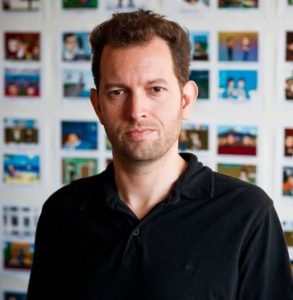Adobe : The Software Giant Transforming the Way You Look at the World
Technology, today, has grown to such level that it has changed the way you look at the world. Not only the world, but it has changed the way you look at yourself! Shocking, isn’t it? There are many powerful tools available in the software market that people can use to make you believe in the things that can’t even exist. The creativity, the risks, the hard work, the growing power of multimedia, the inspirations and the motivations, when all were put together, the greatest software of all time, ‘Adobe’, became a reality. Great as it might seem, the story of the success of Adobe was not an easy one, but is the best one you can get inspiration from.
Adobe is an American Multinational computer software company. The headquarter of the company is located in San Jose, California, United States. The foundation of the company is purely based on creating software that enhances the creation of median and intensifies creativity.

Adobe was founded by John Warnock and Charles Geschke, in December 1982. The company’s first office was the Warnock’s garage. It all started when both of the computer geniuses developed a programming language that was specially designed to describe position, shape and size of objects on a computer-generated page. The software was known as ‘Postscript’. But the company, Xerox, they were working in, refused to take the product to the market. Both John and Charles resigned and started working on their own on the same project.
‘Adobe’ name was inspired by Adobe Creek, Los Altos, California, a location near to their homes. The logo (A creative and stylized “A”) was designed by John’s wife, Marva Warnock.
The first product that Adobe launched in the market was a ‘PostScript’ software. It was a powerful computer language, the same that they had designed while working in Xerox. It described to a printer the whole layout of an electronic page. The product surprisingly made a breakthrough, and by 1985, Adobe had $1.9 million in sales. By 1986, the revenue that the company was generating was around $16 million, out of which, $4 million were income based.
Steve Jobs wanted to buy the company, but both of the creators refused. However, after giving second thoughts to the idea, and having words with their investors, John and Charles agreed to sell 19% of the company’s shares to him. For that, Jobs paid at least five times of their company’s value at that time. This deal made it the first company to gain such a profit in its first year only.
This was just a start for the company. Next, it launched a second product which was a type-1 interface. The interface provided digital type fonts that could be printed in any resolution. Subsequently, the company launched the marvellous ‘Adobe Illustrator’, which produced high-quality drawings that can be printed and published very easily. The product stood out brilliantly and generated approximately $85 million as revenues. This was a clear sign that with each product, Adobe was growing and that too on a rapid pace. The company, soon, became one of the best software manufacturers over the world. The quality of the work was very high which made the two founders of the company sit and relax, on the ‘top’.
Their next release, ‘Adobe Photoshop’, still stands best in the market. The software is a photo editor, which became the best seller in the market in no time. In the year 1990, the company had more than $170 million in revenue, including the $40 million total income. Within a period of 4 years, the revenue reached $670 million.
Every story has a point of downfall, and in 1998, such point arrived for Adobe, too. In 1998, Hewlett Packard (HP) made a similar PostScript software. Due to which, Adobe saw a reduction in sales by a massive 40 per cent. The company experienced a setback but was quick to react. Soon, it started rebuilding strategies, restructuring plans and started cutting down on employees.
In 1999, for a comeback, Adobe decided to launch a publishing tool, ‘InDesign’, with a risk of a similar tool already running in the market, sold by Quark. So, Adobe was not expecting much from it. However, when released, InDesign did the impossible. The product became a huge success, gaining Adobe more than $ 1 billion as revenues, over the time, reshaping and reviving the company.
Since then, Adobe has not looked back. Some of the software that they have in the market right now, are Adobe Acrobat, Adobe Flash player, Adobe Dreamweaver, Page maker, Adobe Scan, Adobe Premiere Clip, Adobe Illustrator, Adobe Capture CC, Adobe creative cloud, Adobe connect and the ever-lasting Adobe Photoshop, which carries many more versions of it further.
Adobe has also been involved in social welfare activities. The company works to make its employees’ life more and more convenient by creating a healthy work environment. It has given cash grants and many contributions like volunteer support, software training, donated software to a non-profit organization. The company also supports the environmental stewardship.
As of now, Adobe is ranked number 10 by Forbes on the list of ‘Top 100 Digital Companies’. The company has more than $ 7.7 Billion sales in the market and a market cap of $ 119.1 Billion.
Adobe’s story gives us a glimpse of how something unique can create a spark among consumers. Also, that when you are walking on a path, where nothing goes right, it just requires a proper plan to get back on the track. One should never leave the creative ideas in their head, and the story of Adobe shows that and helps us get them out with the versatility of the software they offer.

Raghav is a student and a content writer. He loves to write about emerging as well as the existing technologies around and about the ones who bring them to you. Music is the other passion that Raghav processes. It is like the fuel to his body. He is also in writing songs and poems. He believes that life is short, so live the best out of what you have got. Raghav considers himself a sci-fi guy, having stories and tech all around in his head, all the time.

 and share them with their friends.
and share them with their friends.
